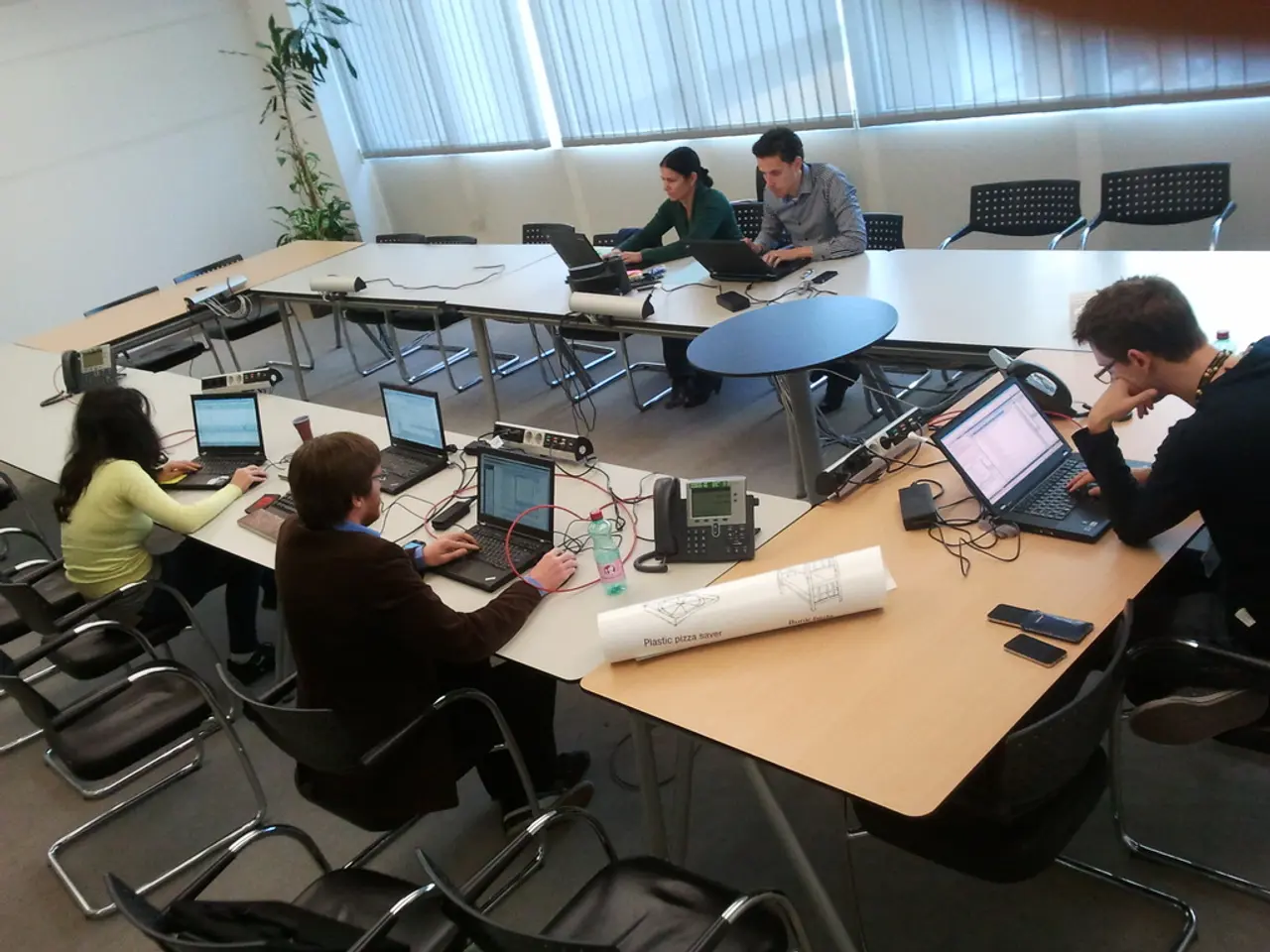India's Hybrid Work Strategy Yields Productivity: Exploring the Advantages of Presenteeism
Working from Home (WFH) in India has become a significant aspect of the country's work culture, driven by rapid digital growth and flexible job opportunities. However, the landscape is complex, shaped by gender roles, urban infrastructure limitations, corporate governance adjustments, and digital infrastructure growth.
Trends
WFH in India is booming, with a surge in remote roles that often require only basic computer skills or no formal degrees. This has made remote work especially popular among women, providing flexibility, income, and career growth from home.
The employment dynamics are also changing rapidly. Nearly half of Indian employees planned to switch jobs in early 2025, indicating a volatile and competitive labor market influenced by changing work preferences, such as remote and hybrid models. The rise of AI and digital tools is also transforming work processes, especially for younger workers.
WFH has a positive impact on work-life balance, improving productivity, job satisfaction, and talent retention. However, many struggle with maintaining clear boundaries between personal and professional life.
Challenges
One of the significant challenges is gender disparity. Indian women face disproportionate domestic responsibilities while working remotely, highlighting persistent gender inequities. Women report increased household burdens despite the professional flexibility that WFH offers, complicating true work-life balance.
Urban infrastructure constraints also pose a challenge. Many urban households lack adequate infrastructure for remote work, such as reliable internet connectivity, quiet private spaces, and ergonomic setups. This deficiency particularly affects those in crowded or lower-income urban areas.
Corporate governance must evolve to support remote work through infrastructure investments, digital collaboration tools, wellness programs, and policies that maintain employee engagement and productivity. This includes managing hybrid workforces and supporting equitable work environments.
Digital infrastructure and skills remain a barrier for many, especially outside major metro areas. While digital infrastructure is expanding rapidly, enabling more remote jobs, the digital divide in terms of quality connectivity, access to devices, and digital literacy still poses a challenge.
Additional Context
The rise of WFH is influencing real estate trends, with an increasing demand for homes designed for dual living-working purposes, better connectivity, and more space outside traditional urban centers. This reflects a broader societal shift embracing flexibility and work-life integration.
Looking Ahead
While WFH is growing strongly in India, significant challenges remain around gender equity, urban infrastructure, corporate governance adaptation, and digital accessibility that must be addressed to fully harness its potential. The stakes are unusually high due to the need to accommodate the world's largest youthful labor force, contain megacity congestion, raise female labor-force participation, and sustain post-pandemic productivity growth.
- Source 1
- Source 2
- Source 3
- Source 4
- Source 5
- The growth of WFH in India has exposed an urgent need for education and self-development in digital skills to compete in the rapidly changing job market, as remote roles increasingly require minimal formal education or specific technology expertise.
- Geographically, the mains drivers of WFH growth are urban areas, although there is a growing trend for remote workers to seek homes in regions with better infrastructure, connectivity, and a better work-life balance, reflecting a broader societal shift.
- To ensure long-term economic prosperity, the mains focus for authorities, corporations, and educational institutions should be on preparing the workforce for a more technology-oriented economy, while addressing environmental concerns and ensuring equitable opportunities, especially for women and those in lower-income areas.




